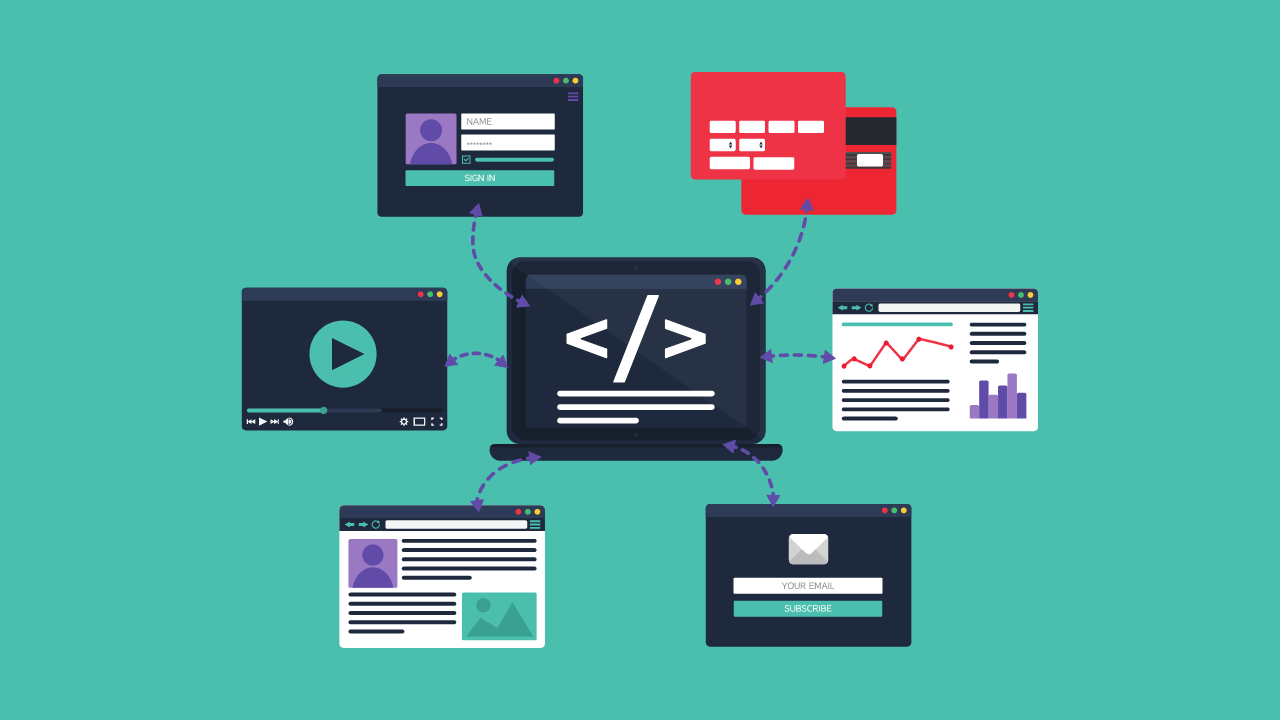WordPress is a robust content management system (CMS) used by many, from individuals to large corporations. Although WordPress is versatile, there are some limitations to consider before adopting it as the core platform for large-scale solutions. Here are some of these limitations. Understand how tailored WordPress development and solutions can surpass CMS limitations and push boundaries.
Scalability
WordPress might struggle with scaling for larger organizations with high-traffic websites. While WordPress can manage substantial traffic, it might require additional customization and optimization to maintain optimal performance.
Security
WordPress’s popularity makes it a frequent target for hackers. Regular updates, security monitoring, and robust security measures are crucial to ensure its protection.
Customization
Although WordPress is highly customizable, achieving the level of customization needed for an enterprise solution might demand significant development resources.
Integration
WordPress may not seamlessly integrate with all enterprise-level software systems, requiring extra development effort to connect with other systems. Continue reading to discover how custom WordPress development can overcome native CMS limitations and go beyond.
Support
While a large community of WordPress developers and users exists, enterprise-level support may be limited. Organizations may bear the responsibility for maintaining and updating the website.
Overall, WordPress can be a viable choice for enterprise solutions with the right customization, development, and support. However, careful consideration of these limitations is essential when choosing a platform for an enterprise solution.
What If WordPress No Longer Meets Your Company’s Needs? Go Beyond Limits with Custom Development
If WordPress no longer fulfills a company’s requirements, several options are worth considering:
- Customization: It may be possible to tailor WordPress to meet specific company needs. This might involve additional development resources, utilizing plugins, or incorporating third-party integrations.
- Migration: If customization is not feasible, migrating to a more robust and adaptable CMS might be necessary. Popular enterprise-grade CMS options include Drupal, Sitecore, and Adobe Experience Manager.
- Headless CMS: Using a headless CMS offers greater flexibility and customization by separating the backend from the frontend. This allows for using different frontend technologies, benefiting companies with diverse digital channels.
- Custom Development: Building a fully customized solution from the ground up might be necessary to meet unique company needs. While potentially costly and time-consuming, this approach allows for tailoring to very specific requirements. Custom WordPress solutions are a great way to push these boundaries.
Carefully evaluating the options and selecting the solution that best aligns with the company’s needs is crucial. Consider factors like scalability, customization, integration, and support when choosing a CMS or development approach. Consult a company specializing in advising, implementing, or developing projects to migrate from WordPress to a custom solution. Notably, European developer LaSoft offers such services.
Custom Web Application Development: Going Beyond WordPress Limitations
Custom development involves creating a solution from scratch tailored precisely to a company’s specific needs. This approach typically involves a collaborative team of developers, project managers, and stakeholders who work together to define requirements, design the solution, and build and test the final product.
A custom development approach is particularly beneficial for companies with unique needs that off-the-shelf solutions or even highly customizable CMS platforms like WordPress cannot meet. It offers complete control over the development process, ensuring the final product aligns perfectly with the company’s specific requirements.
The custom development process generally involves several stages:
- Requirements Gathering: The initial stage focuses on gathering detailed requirements from stakeholders and defining the project scope. This may include interviews, workshops, surveys, and other methods to comprehensively understand the company’s needs and goals.
- Design: With clearly defined requirements, the development team initiates the design phase, creating wireframes, mockups, and prototypes to visually represent the final product.
- Development: The development stage involves building the solution based on the established requirements and approved design. This includes coding, testing, and debugging the software to ensure it meets the company’s needs.
- Testing and Deployment: Upon completion of the development phase, the solution undergoes rigorous testing to confirm its functionality and adherence to requirements. Once testing is successful, the solution is deployed to the production environment.
Custom WordPress Development: Breaking Through Limitations
While potentially costly and time-consuming, custom development offers the invaluable benefit of complete control over the development process, resulting in a solution tailored precisely to the company’s specific needs. It’s crucial to carefully evaluate the costs and benefits of custom development and consider alternative options, such as customization or migration, before deciding.
